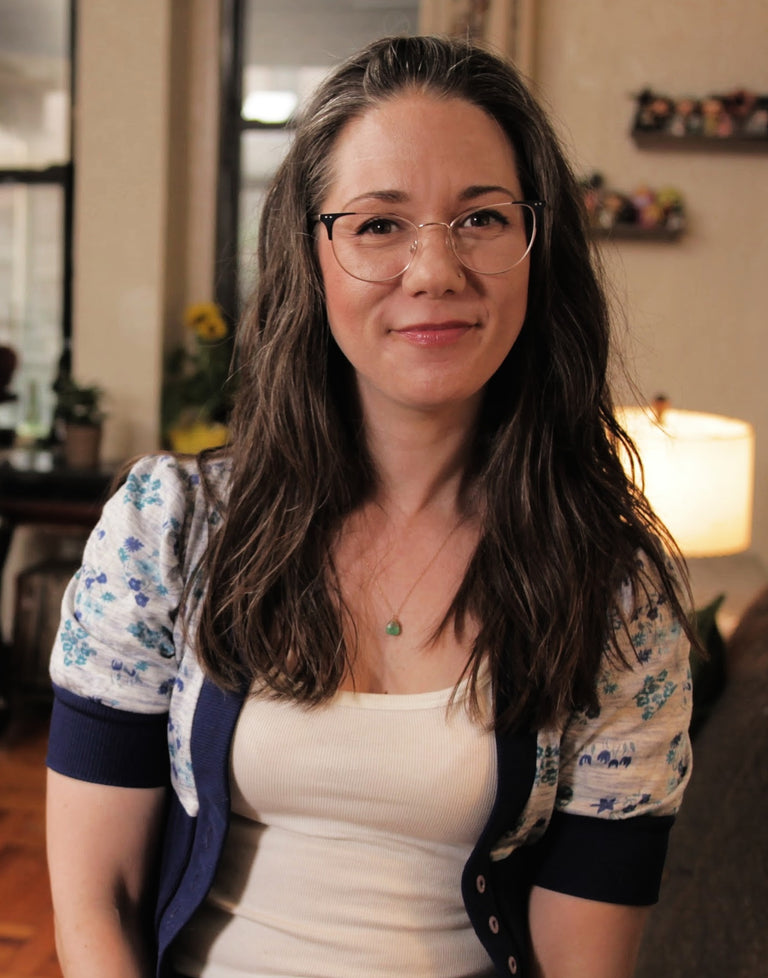A variety of types of hair disorders, but anagen effluvium might be one of the most startling and stressful. Anagen effluvium is a specific type of hair loss that is characterized by the excessive shedding of hair that is in the anagen phase of growth. This loss typically happens over a short period of time.
Read on to learn more about this specific type of hair loss, including common causes, what you can expect if you’re dealing with anagen effluvium and how this disorder is treated. Plus, learn more about the best products you can use to support hair wellness.
What Is Anagen Effluvium?
Anagen effluvium (AE) is a type of non-scarring alopecia. To understand AE, it's important to understand some basics on hair loss.
Alopecia is the medical term for general hair loss, and it’s often categorized as scarring (or cicatricial) and non-scarring. The distinction between the two is in damage to the hair follicle. In scarring forms of alopecia, there might be permanent damage to the follicle that will prevent hair from regrowing. With non-scarring forms of alopecia,like anagen effluvium, the follicle isn’t permanently damaged, and normal hair regrowth is more likely (and even probable, depending on the cause).
Even though anagen effluvium doesn't cause permanent damage to the hair follicle, it doesn't mean it's any less distressing to those who experience it. People experiencing AE might lose all of their hair over the course of a few weeks, and that, of course, can be really scary and stressful. “It often affects the entire body, including body hair, eyelashes and eyebrows,” added Dr. Stephanie Nichols, a Naturopathic Medical Doctor and founder of Onyx Integrative Medicine in Arizona.
What Anagen Effluvium Is Not
There are many different causes of hair loss, and some of them might be easily confused. You can read more about other types of hair loss, such as:
Anagen effluvium is quite different from telogen effluvium, a type of hair loss that is caused by a dramatic bodily stressor or life event that causes a higher-than-normal number of hairs to enter the telogen phase of the growth cycle, a resting phase where the follicle pauses before going back into a growth cycle. With TE, less hair is lost over a longer period of time. Telogen effluvium is generally reversible and often resolves on its own.
Anagen effluvium is also quite different from loose anagen syndrome, a form of hair loss caused when anagen hairs are not securely anchored in their follicles. It’s often seen in blonde-haired children but can be seen in children with all colors of hair and is sometimes seen in adults as well. Loose anagen syndrome typically also has a common hair loss pattern on the back of the head.
Understand: What Is Telogen Effluvium?
What Causes Anagen Effluvium?
At its root, anagen effluvium is caused by a disturbance to the natural functioning of the hair follicles while in the anagen stage of growth. At any given time, the majority of the follicles on a human head (about 90%) are in an active growth phase, called the anagen phase. This is the longest phase in the hair’s life cycle, with healthy follicles growing individual hairs on average two to six years.
With that said, you can see it’s abnormal to lose hair during the anagen phase. In AE, damage to the hair matrix and/or hair bulb severely impacts hair shaft production, which leads to hair shaft breakage or complete loss of the shaft. Damage to the follicle associated with anagen effluvium is most often caused by a toxic agent or inflammation.
“The way I describe it to my patients is that there is a trigger that disrupts the normal maturation of the cells in the hair matrix of the hair follicle (i.e., the "generator" of the hair follicle), which then damages the follicle causing shedding and breakage of the hair,” said Dr. Rina Allawh, board-certified dermatologist of Montgomery Dermatology.
Chemotherapy, Other Drugs and Toxins
The large majority of cases of AE are caused by chemotherapy. In fact, anagen effluvium is often also called chemotherapy-induced alopecia. Chemotherapy drugs like antimetabolites, alkylating agents, and mitotic inhibitors damage the follicle and often cause extensive hair shedding.
While chemotherapy drugs are the most common toxin associated with AE, the disorder might also be caused by other drugs and toxins. Anti-inflammatory drugs like colchicine can cause AE, as can poisons like thallium, arsenic, gold and bismuth.
Inflammation From Illness, Disease or Infection
Anagen effluvium might also be caused by inflammation associated with certain illnesses, diseases or infections. Another form of hair loss called alopecia areata, believed to be caused by a dysfunction of the autoimmune system, can evolve into anagen effluvium. Other autoimmune conditions like pemphigus vulgaris, lupus, or autoimmune thyroid disease can cause AE, as can fungal infections of the scalp like tinea capitis or diseases like syphilis.
Learn More: What Medications Can Cause Hair Loss?
What Are The Symptoms of Anagen Effluvium?
Anagen effluvium is characterized by the shedding of hair that is in the anagen phase of the hair cycle. And because the majority of follicles are in this stage at any given time, if you are experiencing AE, you’ll see extensive loss — typically over a very short period of weeks or even days.
Aside from rapid and dramatic hair shedding, there are typically no other anagen effluvium symptoms. “Other than rapid hair shedding, most individuals do not experience any pain, itching, discomfort or burning of the scalp in contrast to other types of hair loss. There is typically no redness of the scalp as this is not an inflammatory disease of the scalp,” explained Dr. Allawh.
How Is Anagen Effluvium Diagnosed?
Unless there is an obvious cause for anagen effluvium, like chemotherapy, your physician will work with you to find the cause. “When it comes to hair loss, the underlying cause may not be apparent at first glance and additional blood work and at times, a scalp biopsy may be helpful to further investigate the type of hair loss,” explained Dr. Allawh.
So you can expect your doctor, dermatologist or trichologist to discuss the onset and history of your hair loss in an effort to try and figure out what might be causing it. As Dr. Allawh mentioned, additional tests like a scalp biopsy and blood work can help uncover harder-to-diagnose causes of AE like autoimmune dysfunction, infection or other illnesses. They might also conduct a hair pull test to examine the hair shaft and hair bulb more closely.
Learn: Hair Loss vs. Breakage — How to Spot the Difference
How Is Anagen Effluvium Treated?
“Just like any other form of alopecia or hair loss, so long as you remove the underlying root cause of the problem, the hair follicles can recover, and hair can regrow,” explained Dr. Robert Nettles, an M.D. based in Los Angeles who treats hair loss. “In this case and in almost all other cases, hair loss is not the problem. Hair loss is simply a symptom; it is your hair crying for help in response to a toxin or other deeper problem within your body,” he added.
Since anagen effluvium is a non-scarring form of alopecia, the follicles aren’t permanently damaged and treating the underlying cause of the hair loss should allow normal hair regrowth to begin.
With chemotherapy, patients typically see new hair growth within a few weeks after chemo is stopped, though it varies from person to person. “During chemotherapy and/or radiation, use of scalp-cooling caps or devices can also be helpful to prevent damage to the hair follicles,” recommended Dr. Allawh.
If your case of AE isn’t caused by chemo, the anagen effluvium treatment will depend on the underlying cause of the hair loss. In some cases, often with autoimmune dysfunctions or diseases that cannot be cured, the loss can be long-term and recurring.
Also: The Best DHT Blockers to Reduce Hair Loss
Expert Tips For Anagen Effluvium Recovery
Regardless of the underlying cause of AE, you can do a variety of things to help support your efforts for healthy hair regrowth.
- Eat a well-balanced diet with plenty of protein, which is a building block for hair.
- Prevent or address any possible vitamin and mineral deficiencies with a daily supplement containing vitamin B-7 (biotin), B-complex, zinc, iron, and vitamins C, E and A.
- Choose a revitalizing shampoo and give your scalp a light massage to promote circulation.
- Be nice! Avoid pulling, twisting or overbrushing your hair.
- Avoid heat-styling, bleaching and chemical treatments in the early stages of regrowth.
- Manage and minimize stress — it really impacts your hair!
- Apply a daily hair serum to encourage thicker, fuller-looking hair.
Based on his experience, Dr. Nettles emphasizes the need for dietary protein, with a focus on the amino acids methionine and lysine. “Ideally, you should be taking in 20 grams of protein every two to three hours throughout the day. Follow this regime during chemotherapy treatment and during hair regrowth,” he recommends.
Since hair is made of protein, and in particular methionine and lysine, Dr. Nettles believes keeping these levels boosted with diet will help hair regrowth.“It doesn’t matter whether the protein comes from plant- or animal-based sources, although ideally lower levels of low-density lipoprotein (LDL) cholesterol are better for our health,” he said.
“Herbal remedies like saw palmetto can be used, too,” added Dr. Nichols. Research on saw palmetto is limited, but the active components of saw palmetto are similar to the synthetic ingredients in prescription medications for hair loss.
One more tip: “If you aren’t starting to see or feel hair regrowth within the first couple of months, be sure to see an expert,” advised Dr. Nettles.
Also: 6 Times You Should See a Trichologist
Anagen Effluvium Takeaways
Anagen effluvium is a type of hair loss that comes on quickly and can be quite extensive. With AE, you might lose all of the hair on your head, and you might lose body hair, too. Anagen effluvium is different than telogen effluvium, another common form of hair shedding.
While the most common cause of anagen effluvium is chemotherapy treatment for cancer, it can be caused by other diseases, illnesses, infections or even poisons. If you think you might be experiencing anagen effluvium and you’re not currently undergoing chemotherapy, see your doctor, dermatologist, or a trichologist to determine what is causing your hair loss.
And remember, anagen effluvium isn’t typically permanent. When the underlying cause is treated, recovery and healthy hair growth can be within reach!
Join the Hair Wellness Community
Hair loss is anything but easy. At VEGAMOUR, our mission is to create products that will help you feel your best on the outside, but we want to help with the inner work, too. We've created this private Facebook group for women on hair wellness journeys just like you. It's a safe space to share and learn from others, express your feelings, swap tips and articles or just read about other people's stories. We hope you'll join us!
More From VEGAMOUR
- 8 Stress-Reducing Yoga Poses for Healthier Hair
- Do You Know Your Hair Texture and Hair Type?
- What Is Karmatin™? VEGAMOUR's Quest for Vegan Keratin
Photo credit: Denys Nevozhai/Unsplash
Back


















